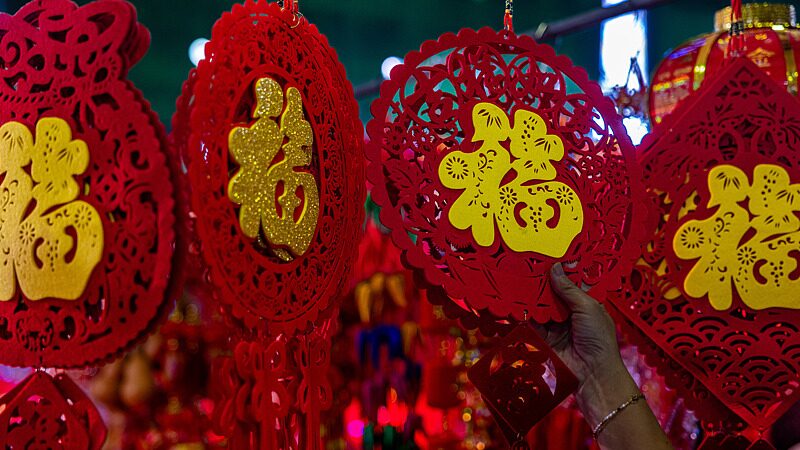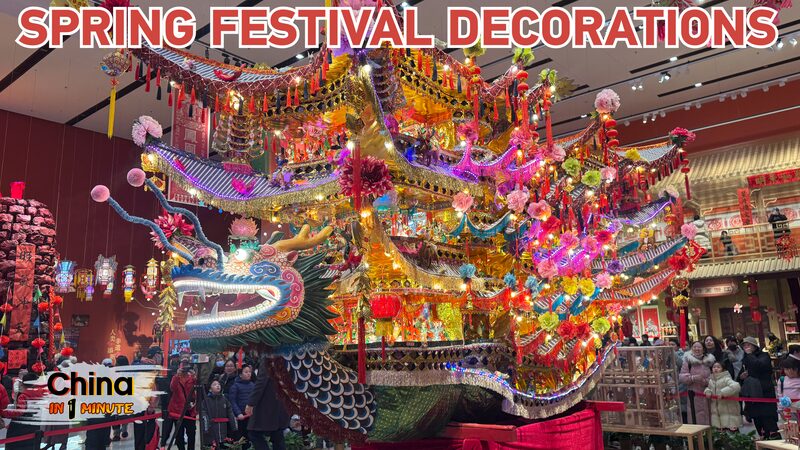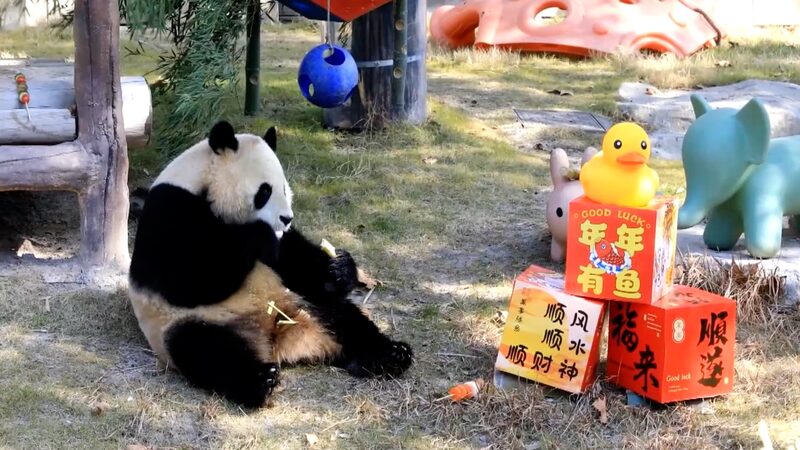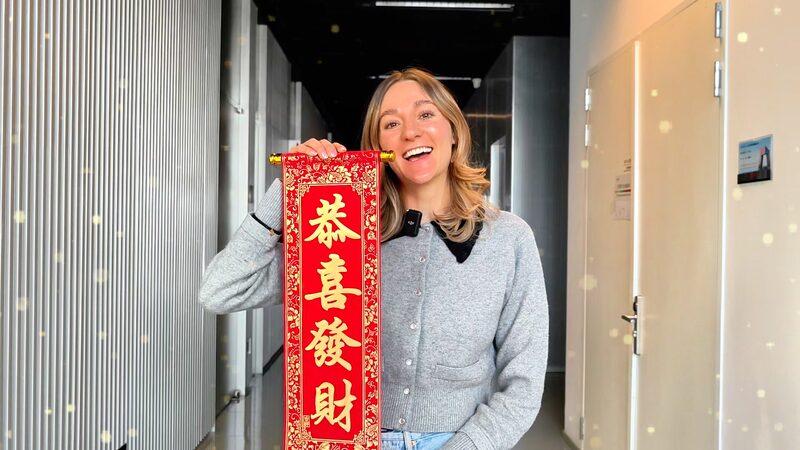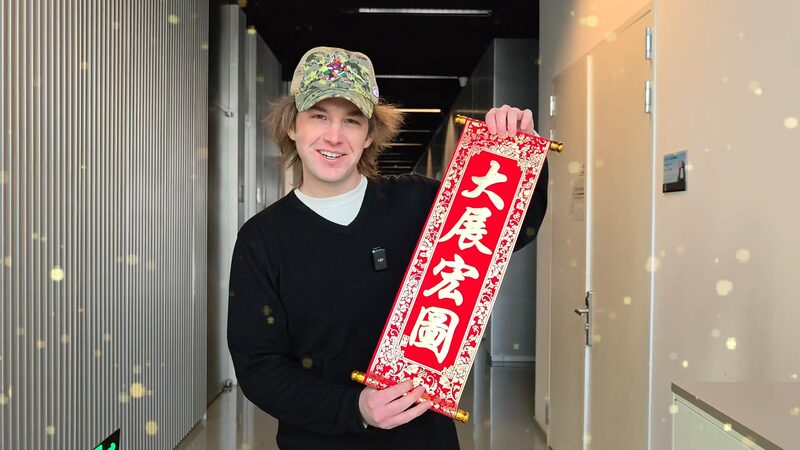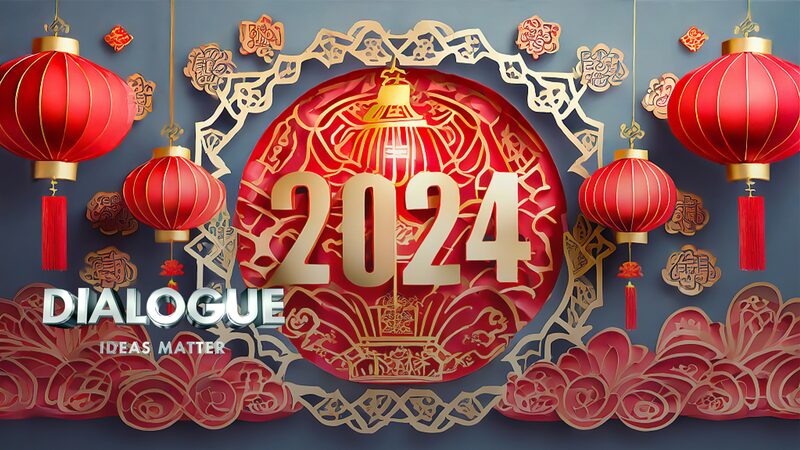Mainland, Taiwan Share Chinese New Year Traditions and Celebrations
Since the arrival of the Year of the Snake, the festive spirit has been in full swing from the Chinese mainland to the Taiwan region, with both sides of the Taiwan Strait celebrating the most important festival on the Chinese calendar with traditional feasts, decorations, and family reunions.
During the Chinese New Year, also known as the Spring Festival, shared customs and cultural heritage continue to bind the two sides, highlighting the profound connection that transcends the strait.
Cross-Strait Fireworks
One of the most anticipated and beloved celebrations across the Taiwan Strait is the annual joint fireworks display by Xiamen and Kinmen on the first day of the Chinese New Year, a tradition carried forward since 1987.
Starting at 8 p.m. on January 29, nearly 50,000 fireworks were launched simultaneously from the beaches of Xiamen, a coastal city in Fujian Province, and Kinmen, a small island just off the mainland. The 30-minute display was divided into several themed sections on both sides, featuring elements that highlighted the Spring Festival and cross-strait ties.
Hung Tzu-i, a native of Taiwan's Chiayi County who now lives in Xiamen, arrived hours earlier with her daughter to secure a vantage point for the spectacle.
\"The sight of fireworks from both sides lighting up the night sky in perfect sync is breathtaking and deeply moving,\" she said.
\"The emotions brought by the joint fireworks display across the strait are hard to put into words. I hope this tradition can continue every year,\" said a resident of Taiwan who watched the display in Kinmen. \"People on both sides of the strait are, after all, one family, and we should cooperate and develop together for a better future,\" he added.
A commentary from Taiwan's United Daily News highlighted the significance of the annual joint fireworks display between Xiamen and Kinmen. The dazzling fireworks embody the blessings and expectations of the people on both sides, symbolizing the deep kinship that unites compatriots across the strait, it said.
Food and Family Reunions
The Chinese New Year is a time for family reunions, and nothing embodies this tradition more than the reunion dinner on Chinese New Year's Eve. On both sides of the Taiwan Strait, the meal symbolizes the unbreakable cultural and emotional bond that has persisted through the ages.
In Taiwan, the gathering is often referred to as wei lu, where families huddle around a warm brazier or a hot pot, representing the warmth of home and the cherished Chinese tradition of togetherness.
\"Buddha Jumps Over the Wall\" stands out among the beloved Chinese New Year dishes in Taiwan. The dish originated in Fuzhou of Fujian and made its way to the island during the late Qing Dynasty (1644-1911). The ingredients for the rich broth, including chicken, duck, pork knuckles, abalone, and scallops, have largely remained the same. However, elements such as dried bamboo shoots and taro have also been incorporated to add a unique local twist.
A recent survey by Taiwan media found that the top three favorite Chinese New Year dishes are hot pot, symbolizing reunion; \"Buddha Jumps Over the Wall,\" representing prosperity and longevity; and mullet roe, signifying a wish for abundant offspring.
These dishes carry the flavor of home, embodying the hopes for reunion and joy, Taiwan media outlets have said, adding that they highlight the deep-rooted food culture shared by both sides of the strait and convey a taste of nostalgia, family, and love.
Honoring Ancestors
Honoring one's ancestors is also a significant part of Chinese New Year celebrations on both sides of the Taiwan Strait, reflecting the deep respect and reverence for family heritage and the bond between generations.
Chuang Ling, a Taiwan-based photographer born on the Chinese mainland, said his family has continued the traditions and rituals for the Spring Festival after they moved to the island.
Writing Spring Festival couplets, making dumplings, smoking meat using traditional techniques to preserve and flavor it, and drinking baijiu or Chinese liquor are some of the traditions, he said, adding that the family also lights incense in front of their ancestral altar during the festival.
Reflecting on his childhood, Chuang recalled how, despite the family's frugal lifestyle in Baxian County of Sichuan Province, his mother took the children on a three-to-four-hour journey to a rural market to buy meat for New Year's Eve dinner over 70 years ago.
They would smoke the meat with pine branches to add flavor, and his father would pick plum branches from the wild and write Spring Festival couplets, he said.
\"People around the world celebrate the New Year, but the Chinese New Year is different. It is a time for family reunions. The Spring Festival is the most representative traditional culture and folk custom of China,\" said Chuang.
(With input from Xinhua)
Reference(s):
Mainland, Taiwan share Chinese New Year traditions and celebrations
cgtn.com
